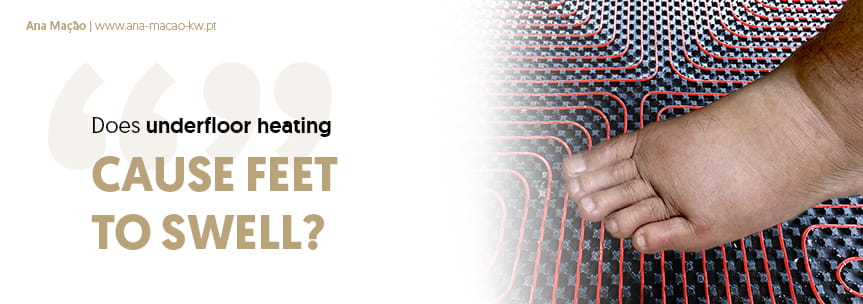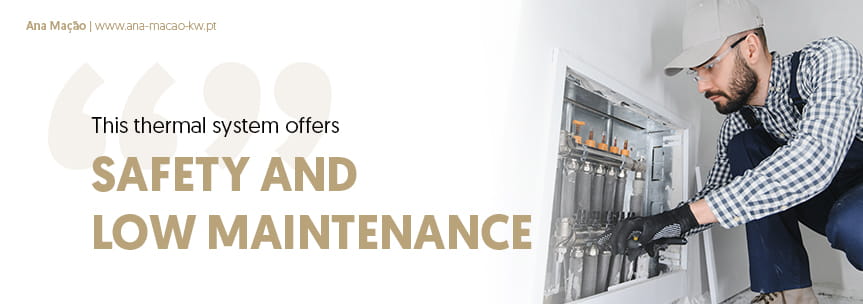Types of Underfloor Heating
Underfloor heating can be mainly categorized into two types: electric and hydraulic.
Electric Underfloor Heating:
It uses electrical cables or heating sheets to generate heat.
It is easier and quicker to install and is generally more suitable for renovations or smaller spaces.
It tends to be less energy efficient compared to plumbing, especially in areas with high electrical rates.
Hydraulic Underfloor Heating:
It uses hot water that circulates through pipes to generate heat.
Installation is more complex and expensive, but it is more energy efficient, especially when combined with a heat pump.
It is best suited for new construction or major renovations due to its intrusive installation.
Both systems provide uniform and comfortable heating, without the drafts associated with conventional heating systems. Hydraulic underfloor heating is generally preferred for larger scale projects or where energy efficiency is a priority, whilst electric underfloor heating may be more suitable for smaller scale projects or renovations.
Myths about Underfloor Heating
Myth 1 - Cost : It is a common opinion that underfloor heating is more expensive than using radiators or air conditioning units. Although the initial cost may be higher (the installation price of underfloor heating is 30% more expensive than conventional radiators), its energy efficiency and the fact that it requires less maintenance can result in lower operating costs over the long term. term.
Myth 2 - Heating Efficiency: Some people believe that underfloor heating is less efficient in terms of heating, because the heat emission is not as localized. However, it provides a more uniform heat distribution, creating an extremely comfortable environment. Heat is evenly distributed across the floor, allowing for an ambient temperature of up to 25°C. Furthermore, it is possible to set the desired temperature by adjusting the thermostat.
Myth 3 - Speed of Heating: There is a perception that underfloor heating is slower to heat up. Although hydraulic systems may be a little slower, that doesn't mean it has to withstand cold temperatures. Proper configuration can ensure effective heating. The hydraulic system operates continuously, taking advantage of the thermal inertia of the housing envelope (walls, roof) to generate only the necessary heating energy, minimizing heat losses to the outside.This efficiency translates into significant savings compared to intermittent systems that heat the entire house immediately upon arrival. If you correctly configure the system, you will obtain a pleasant temperature in a perfectly acceptable period of time and without the high consumption of radiators and other systems, which trigger electrical consumption when they are turned on.

Myth 4 - It makes your feet swell: In the early days, poorly adjusted underfloor heating systems (when the temperature could go up to 35ºC) could cause your feet to swell. Today, with temperatures set between 19°C and 23º/25°C, this is no longer a problem.
Myth 5 - It is harmful to health: Underfloor heating prevents the circulation of dust particles that can cause allergies and illnesses. This is a system that does not cause drafts (ventilation), guarantees optimal humidity levels, maintaining ideal humidity levels, without accumulating dust mites or mold, which is especially recommended for people who suffer from allergies or respiratory problems.
Myth 6 - Installation Location : Contrary to what the name suggests, the installation of underfloor heating is not limited to floors, it can also be installed on walls or ceilings. These alternatives can reduce installation costs and increase system efficiency. Generally speaking, underfloor heating does not take up space in the living and decorable area of the home, being hidden, which allows it to be integrated perfectly into any modern interior.

Myth 7 - Compatibility with Parquet: Underfloor heating can be compatible with parquet and other materials, as long as suitable systems and materials are selected. Nowadays, underfloor heating can be installed on almost any type of floor, from natural stone to agglomerated materials. We will only have to ensure that the selected model is a stable and moisture-resistant type of wood - with the manufacturer indicating that it is compatible with hydraulic underfloor heating - which is quite common and easy to find on the market.
Myth 8 - Energy Efficiency: There is a myth that underfloor heating is less efficient, however when combined with a heat pump it can be highly efficient and environmentally friendly.
Myth 9 - House size: Another myth is that underfloor heating is not effective in smaller spaces or as a complement to other heating systems. Furthermore, the use of heat pumps can significantly improve the energy efficiency of hydraulic underfloor heating.
Myth 10 - Technically, underfloor heating is electric heating: When the type of underfloor heating adopted is the hydraulic system, it works with hot water. If this hot water is produced by a heat pump, the heating energy will consume some electricity, but most of the energy comes from the ambient air outside - free, clean, renewable energy. Since underfloor heating works at a constant and low temperature, opting for a heat pump is the ideal option, more economical to use and providing better energy certification for the property.
Myth 12 - Underfloor heating does not cool the house in the summer:
We hope this article has helped to demystify some myths about underfloor heating and help you make more efficient and economical decisions when it comes to air conditioning your home.
Pros and Cons of Underfloor Heating
Benefits of Underfloor Heating
Underfloor heating has multiple advantages that make it stand out from other heating solutions. We list some:

- Thermal Comfort: This system provides a feeling of superior thermal comfort, thanks to the uniform distribution of heat throughout the environment.
- Minimizes Heat Losses: In addition to uniform distribution, heat losses through ceilings and walls are significantly reduced. Adequate thermal insulation, combined with efficient windows, can further optimize this efficiency.
- Maximizes Available Space: Unlike other systems, underfloor heating is invisible and does not take up space, allowing greater freedom in arranging furniture.
- Safety and Low Maintenance: This system requires minimal maintenance and comes with extensive warranty periods. Maintenance focuses on the water heating system, while the mesh embedded in the floor remains maintenance-free. Furthermore, the absence of exposed surfaces or extremely hot areas minimizes risks, increasing safety.
Limitations of Underfloor Heating
Like any heating system, underfloor heating has its disadvantages. Here are some:
- Initial Investment: The cost of purchasing and installing this system is higher when compared to other heating options.
- Installation Period: Although it is a more complex installation, the time required for its complete installation is prolonged, involving steps such as preparing the floor, placing the mesh and subsequent covering.
- Construction Requirements: Installation requires a certain minimum depth in the floor, which may limit the adoption of this system in some properties.



